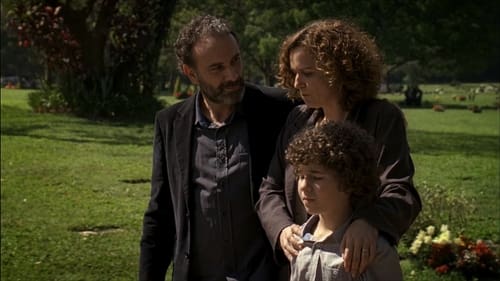
Sound Recordist
An examination of the relationship between the life and art of Maria Martins, now recognized as one of the greatest Brazilian sculptors, in addition to her engravings and texts. The film reveals the greatness of her work and her boldness when dealing directly with the feminine perspective of sexuality, a transgression that led to attacks by Brazilian critics. In parallel, her life as the wife of an important diplomat and her connection to Marcel Duchamp, in a relationship of mutual collaboration between the two artists.

Sound
1986. In the waiting room of a clandestine abortion clinic, the receptionist, a patient and a accompanying await the passage of Halley's comet, while the doctor faces difficulties with one of the procedures.

Sound Recordist
Antonio is 8 years old and is a Santos supporter. He dreams of going to the stadium to watch their team play. The film accompanies Antonio in his memorable first trip to a football stadium.

Sound Mixer
Théo goes to the funeral of his childhood best friend. Then, memories return.

Sound
A short film made for City Life (1990)

Sound
En 1977, Raquel Gerber inició una investigación para una película sobre la emancipación de la población negra de Brasil. Tres años más tarde conoció a Beatriz Nascimento quien, en busca de su propia identidad, estaba haciendo una investigación histórica sobre la relación entre las culturas negras de África y Brasil. Ellos decidieron cooperar. El resultado es una película sobre las organizaciones negras y conferencias en los años 1970 y 80, por un lado, y sobre un estudio algo emocional y poético por Beatriz Nascimento de la continuidad cultural del brasileño negro por el otro. Sin embargo, la película es mucho más que esto: es también un intento de arrojar nueva luz sobre la historia de los negros, y así contribuir a la emancipación negra.

Sound Recordist

Sound
From its very title, Cláudio Kahns and Antônio Paulo Ferraz's Santo e Jesus, Metalúrgicos is crystal clear about where it stands and about its messianic flair. Through a wordplay with the religious connotation of the names of the two men, murdered during the worker strikes of the late 1970s in São Paulo, it associates sainthood and Christ himself with the working class. That association is reaffirmed throughout the film, from the very beginning, including by a priest. The martyrdom of metalworkers Nelson Pereira de Jesus and Santo Dias da Silva is the starting point to denounce the working conditions faced by factory workers, and the repression which ensues whenever they try to resist them. However, the film also presents us with the 'official' version of the facts, going so far as to feature interviews with the man who killed Nelson. Obviously, it sides with the workers, as it conveys the strength of the oppressed and the impudence of the oppressors.

Sound Director
The process of formation of the person and its identity from an African conception of the world. The orixás (gods), linked to the forces of nature, are equal to people, and are not transcendent. of the person with their orixá, within the family and the culture. Filmed in a Candomblé terreiro of Bantu origin.





